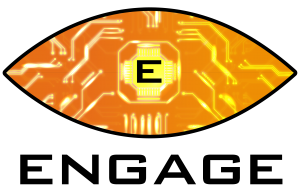The Oculus Quest 2 is the most popular standalone wireless headset you can buy. But just because it is wireless doesn’t mean you cant enjoy the benefits that PCVR has to offer. Be aware that a suitably powerful PC or Laptop will be required in order to do so. Check Oculus’ minimum specification to see if yours matches up before proceeding.
As a minimum, you will require an Intel Core i5-4590 or AMD Ryzen 5 1500X CPU, 8GB or more of RAM memory, and a Windows 10 operating system (no other OS is supported at this time). It also demands a graphics card from either Nvidia or AMD, from the AMD RX 5000 or Vega generations, Nvidia’s RTX 2000 or 3000 series, GTX 16-series (1650 Super and up), and GTX 1000 series (1060 3GB and up).
If you are unsure what your current specification is, you can find this information from the System Information dialog box. To see it, type “System” in the Start button search box and click “System information” when you see the icon in the search results.
Oculus Link is a premium fibre-optic cable which allows you to connect your Oculus Quest headset to your computer. That doesn’t mean however, that you must use Oculus’ own cable, you just need a USB-USB-C or USB-C-USB-C cable, depending on your PC or laptop connection. Consumers will see this as a welcome alternative, as the Oculus Link cable comes in at a pricy $79, whilst we can pick a similar one up for less than $20. Oculus does recommend a USB 3.0 or better connection however.
But does that mean we should? It’s unclear how much a 3rd party cable affects the quality of the connection between PC and headset. There are concerns over potentially poor latency issues from cheaper cables and reports that some don’t offer sufficient charging power to the headset either.
Technically speaking, the charging cable that comes with the headset works perfectly fine, but at just 1 metre in length, it wont be much use here. Though if you are only using it for file transfer then it could be all you need. You’ll need a USB-C connection on your PC or laptop as this cable is USB-C-USB-C. If you don’t, you’ll need to buy a USB-C to A adapter. Just make sure it’s from a reliable brand to avoid any potential connection issues.
Another thing to consider if you are purchasing a 3rd party alternative is that we suggest making sure it is a minimum length of 5m – this is the same length as the official cable. You’ll need to give yourself enough room to move about now the headset will be tethered to the computer.
If you want to use your connection as an Oculus Quest 2 charging cable too, you’ll also need a compatible USB-C 3.2 Gen 1 port that can handle 3A of power. You can still use a 1.5A or 0.9A port to help maintain the battery life, but it won’t be able to stop it losing power – albeit it at a much slower rate. You can still use them for charging the headset when it is not in use, however.
To begin using your Quest with Link and connect your Oculus Quest to a computer, follow these easy steps:
- Install the Oculus app onto your PC or laptop from the Oculus website https://www.oculus.com/setup
- Open the Oculus app on your PC.
- Turn on your Quest 2 or Quest headset.
- Plug your USB cable into a USB port on your PC or laptop, then plug the other end into your headset.
- Put your headset on to see the following steps.
- A message will be displayed in VR prompting you to Allow access to data. Select Deny.
- If you mistakenly selected ‘Allow’ at the prompt, you must unplug your USB cable from the Quest and plug it back in. Repeat but ensure Deny is selected.
- When prompted to Enable Oculus Link, select Enable to begin remote rendering using Oculus Link.
- Your headset should not be connected to your PC or laptop.
Why do I need to connect my Oculus Quest to my PC
You may be wondering what the benefits are of connecting your wireless Quest headset to a PC. Why are we tying it to a PC or laptop with a cable?. However, using Oculus Link unlocks many benefits. By connecting your headset to a PC or laptop you unlock access to the full Oculus Rift/Rift S content library, as well as SteamVR and other VR platforms as well.
Another option is to purchase Virtual desktop from the Oculus store, but then sideload it from SideQuest. Then you can use Steam VR wirelessly. But, there will be some potential lag issues. Using your existing cables is easy, cheap and provides the best PCVR experience at this time.
